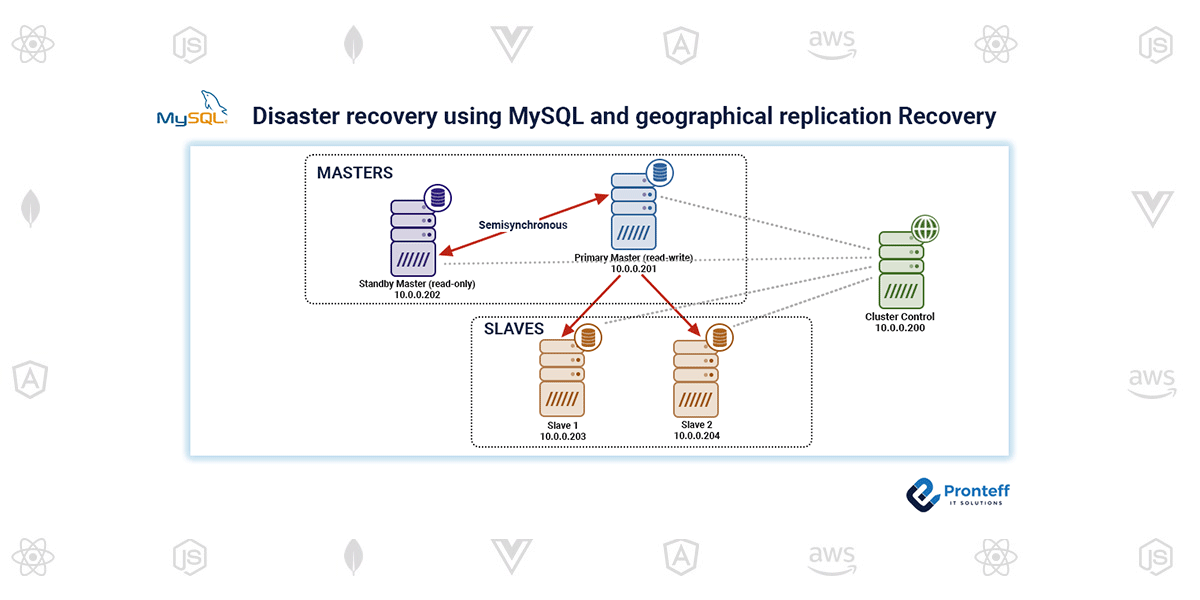Disaster recovery using MySQL and geographical replication Recovery
Here in this blog, we are going to about Disaster Recovery using MySQL and geographical Recovery.
Introduction
In today’s data-driven world, ensuring data availability and disaster recovery are paramount for businesses. Geographic replication in MySQL is a robust solution that allows you to replicate your data across multiple geographical locations, providing high availability and disaster recovery capabilities. In this blog post, we’ll delve into the concept of geographic replication in MySQL, its benefits, and how to set it up.
What is Geographic Replication in MySQL?
Geographic replication, also known as multi-region or cross-region replication, involves replicating a MySQL database across multiple geographical locations or data centers. This ensures that copies of your data are available in different regions, reducing the risk of data loss due to regional outages or disasters.
Benefits of Geographic Replication
High Availability: Geographic replication provides redundancy, ensuring that your application remains operational even if one region experiences downtime.
Disaster Recovery: In the event of a disaster or data center outage, you can failover to a geographically distant replica, minimizing data loss and downtime.
Improved Performance: Users located closer to a specific replica experience reduced latency, resulting in faster query responses.
Load Distribution: Geographic replication allows you to distribute read traffic among replicas, reducing the load on the primary database and improving its performance.
Types of Geographic Replication
MySQL offers several methods for implementing geographic replication:
Master-Slave Replication: In this setup, a master database replicates data to one or more slave databases located in different regions. It’s suitable for read-heavy workloads.
Master-Master Replication: Two or more MySQL servers act as both master and slave simultaneously. This bidirectional replication enables writes to any node and is suitable for write-intensive applications.
Group Replication: MySQL Group Replication is a built-in plugin that provides a highly available and fault-tolerant solution for geographic replication.
Setting Up Geographic Replication in MySQL
Here’s a high-level overview of how to set up geographic replication in MySQL:
Plan Your Geography: Determine the regions where you want to replicate your data and select suitable data centers or cloud regions.
Database Server Setup: Set up MySQL servers in each region, ensuring network connectivity between them.
Choose Replication Method: Decide whether to use master-slave, master-master, or Group Replication based on your application’s requirements.
Configure Replication: Configure MySQL to enable replication. This includes setting up replication user accounts, defining replication sources, and configuring replication settings in MySQL’s configuration files.
Initial Data Synchronization: Perform an initial data synchronization from the primary database to the replicas to ensure they have a consistent starting point.
Monitoring and Maintenance: Implement monitoring and alerting to track the health of your replication setup. Regularly perform maintenance tasks like backups and updates.
Failover and Disaster Recovery Plan: Create a failover plan that defines how you’ll switch traffic to a replica in case of a primary database failure. Test this plan to ensure it works as expected.
Challenges and Considerations
While geographic replication offers numerous benefits, it comes with challenges and considerations:
Network Latency: Replicating data across long distances can introduce network latency, impacting the synchronization process.
Conflict Resolution: In master-master replication, conflicts may occur when two regions simultaneously write to the same data. You need a conflict resolution strategy to handle such cases.
Data Security: Data in transit between regions must be encrypted to ensure security and compliance.
Cost: Geographic replication may involve additional infrastructure costs, including network bandwidth and storage.
Conclusion
Geographic replication in MySQL is a powerful strategy for achieving high availability and disaster recovery while improving performance and distributing workloads. By carefully planning your replication setup, choosing the right replication method, and implementing monitoring and failover strategies, you can ensure that your MySQL databases remain resilient and available even in the face of local catastrophes or outages.








